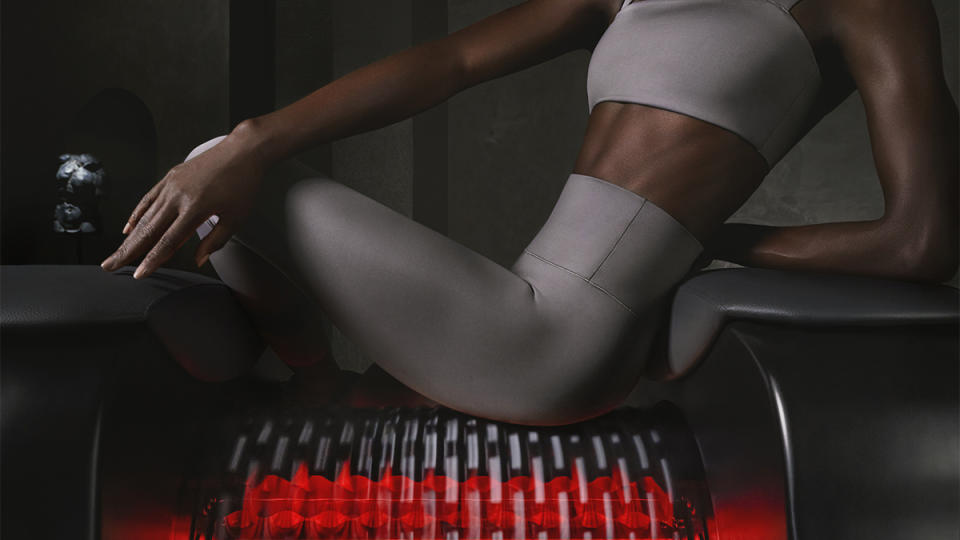We Sat on a $12,000 Massager. Here’s Why You Should, Too.

It looks like a hulking, backless armchair, can feel like a medieval torture device (that’s a feature, not a bug), and costs more than some new motorcycles. Meet the Remedy Roller, brainchild of Dr. Jonathan Leary, founder of the Remedy Place wellness clubs in Manhattan and West Hollywood, who got the idea for the machine while working with one of his chiropractic patients in Germany, where he encountered a similar device.
“I’ve witnessed firsthand the remarkable impact of manual techniques and how they significantly improved range of motion,” Leary says, describing the types of therapies he’s looking to replicate with this $11,900 restorative tool. Offered at Remedy Place’s West Hollywood location and also available for purchase, the Remedy Roller features deeply ridged motorized discs at its center flanked by a pair of supports, with the user aligning target areas over those revolving wheels. “This form of therapy focuses on releasing muscular shortness and tightness, as well as addressing the fascia, which is the connective tissue that wraps around and supports your muscles,” Leary says, adding that it’s here where chronic muscle pain is thought to be held.
More from Robb Report
This New Smart Telescope Lets You See Galaxies Millions of Light Years Away
Samsung's Newest Speaker Doesn't Want You to Know It's a Speaker
The 10 Best Headphone Stands to Keep Your Cans Within Arm's Reach

As I lower my hamstrings onto the central spinners, I’m kneaded with a brisk momentum that’s both soothing and invigorating. Then the infrared heat fires up and I’m coaxed to ease down even farther, where the grooves really start to go to work on my trouble spots. The ample pressure is akin to a vigorous massage, delivering a surprising degree of intensity—though without the localized attention that an actual massage therapist can provide. Still, I’m soon melting into the wheels’ rhythmic power, moving on to my arms, then my traps, then my back. Involuntary moaning may have occurred.
As with good bodywork, expect to feel lighter and looser (and, in certain areas, slightly jellied) after a session. Whether the average weekend gym warrior needs a nearly $12K recovery apparatus in their home is a matter of personal preference—a good foam roller will set you back about 15 bucks—but for those who like their exercise hard, fast, and frequent, the case could be made, especially on a long enough timeline. Actual sports massages aren’t exactly cheap, after all.
Sign up for Robb Report's Newsletter. For the latest news, follow us on Facebook, Twitter, and Instagram.

